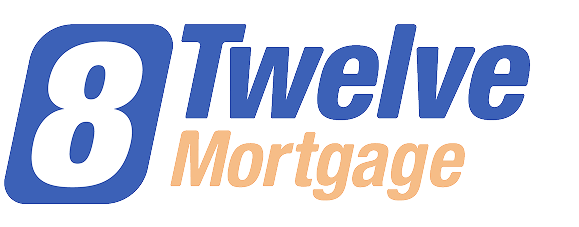
Summary
- Understand emergency loans in Canada: Quick approval and disbursement, but read terms and conditions carefully.
- Spot the predatory loan warning signs: High interest rates, hidden fees, pressure tactics, unsecured loans, no credit checks, and lack of transparency.
- Prepare necessary documentation: Identification, proof of income, bank account info, employment verification, credit report, and possibly SIN.
An emergency loan can give you some much-needed breathing room.
Unfortunately, you're also in a position where high-pressure marketing and sales tactics are pushed onto you everywhere, so it's vital you know what to look for and how to find the best emergency loan options in Canada.
In this guide, we'll cover:
- What to look for in an emergency loan provider
- How emergency loans work in Canada
- How long it takes to receive funds from an emergency loan
- What documents are needed for an emergency loan application in Canada
- 6 ways to spot a predatory loan
- 5 tips for applying to emergency loans in Canada
By the way — if you need to cover a major expense for your health, vehicle, or house AND you have equity in your home, Lotly can help you get a secured home loan or line of credit. We work with 50+ lenders nationwide to find the best interest rates for your financial situation. Get a free consultation today.
How do emergency loans work in Canada?
Emergency loans in Canada work similarly to traditional loans but with faster approval and disbursement processes. They aim to provide immediate financial assistance for unexpected expenses or emergencies.
To apply for an emergency loan, borrowers can either:
- Visit a physical location or;
- Complete an online application process.
If you take out an emergency loan, the experience will look something like this:
- The borrower will need to provide personal information and documentation such as proof of income and identification.
- Once the loan is approved, the funds are typically disbursed within the same day through various methods such as direct deposit or cash pick-up.
- Repayment terms vary depending on the lender, but most offer short-term options ranging from 14 to 60 days.
Crucial: Carefully read the terms and conditions before applying for an emergency loan to ensure you understand all the costs involved. And if you need help finding the best loan for you, Lotly can do the legwork for you.
6 ways to spot a predatory loan
Although emergency loans can provide relief on rainy days, bad actors can take advantage of borrowers in vulnerable situations. Here are some red flags to watch out for when considering an emergency loan:
- High interest rates. Be wary of lenders offering high interest rates, which may indicate predatory practices.
- Hidden fees. Some lenders may hide additional fees in addition to the stated interest rate, so make sure to ask for a full breakdown of costs before agreeing to the loan.
- Pressure tactics. If a lender pressures you into taking the loan or rushes you through the application process, it could be a sign that they are trying to take advantage of your situation.
- Unsecured loans. Predatory lenders often offer unsecured loans, meaning no collateral is required. This puts the borrower at a higher risk of default and can result in even more financial strain. While an unsecured loan isn't necessarily predatory, secured loans like the ones offered by Lotly are safer since they require collateral and have lower interest rates.
- No credit check. While emergency loans are known for their quick approval process, be cautious of lenders that don’t perform credit checks. They may be targeting those with poor credit scores and charging excessive fees.
- Lack of transparency. Legitimate lenders will provide all the necessary information about the loan, such as interest rate, repayment terms, and fees upfront. If a lender is being vague or withholding essential details, it’s best to steer clear.
If you encounter any of these warning signs, it’s vital to carefully reconsider taking out the loan. It’s always a good idea to shop around and compare offers from different lenders before making a decision. Additionally, seeking advice from a financial advisor or credit counselor can help you make an informed decision and avoid falling into predatory lending traps.
What documents are needed for an emergency loan application in Canada?
The required documents for an emergency loan application in Canada may vary depending on the lender. Generally, you will need to provide:
- Identification. This can be a government-issued ID, driver’s license, or passport.
- Proof of income. Pay stubs, bank statements, or tax returns.
- Bank account information. Lenders typically require your banking information for direct deposit of funds and repayment purposes.
- Employment verification. This may be in the form of a letter from your employer or recent pay stubs.
- Your credit report. Some lenders may request a copy of your credit report to assess your creditworthiness.
- Social Insurance Number (SIN). Some lenders may require this for identity verification and credit history checks.
It’s important to note that some lenders may have additional requirements, so it’s best to check with them beforehand. You may also be asked for additional documents like bank statements or references.
How long does it take to receive funds from an emergency loan in Canada?
The time it takes to receive funds from an emergency loan in Canada can vary depending on the lender and the type of loan. Online lenders generally tend to have quicker processing times than traditional banks or credit unions.
- The quickest providers can send you your loan amounts within minutes or hours.
- Typically, you can expect funds to be deposited into your bank account within one to three business days.
- However, if your emergency loan application requires additional documentation or verification, it may take longer for the funds to arrive.
5 tips for applying to emergency loans in Canada
- Make sure to read all terms and conditions carefully before signing any agreements.
- Consider alternative options such as borrowing from friends or family, negotiating with creditors, or seeking financial assistance from non-profit organizations.
- Check your credit score before applying, as a higher score can lead to better loan terms.
- Avoid taking out multiple loans at once, as this can lead to a cycle of debt and financial strain.
- Be realistic about your ability to repay the loan and only borrow what you can afford. This will help prevent further financial difficulties in the future.
By following these tips and being vigilant about potential warning signs, you can ensure that your emergency loan experience is safe and beneficial for your financial situation.
Always prioritize responsible borrowing habits and thoroughly research any lender before committing to a loan agreement.
Taking the time to carefully evaluate your options can save you from falling into a cycle of debt and financial hardship.
Let Lotly find you the best loan out of 50+ lenders across Canada
First, let's recap what we've learned so far:
- Understand emergency loans in Canada: Quick approval and disbursement, but read terms and conditions carefully.
- Spot the predatory loan warning signs: High interest rates, hidden fees, pressure tactics, unsecured loans, no credit checks, and lack of transparency.
- Prepare necessary documentation: Identification, proof of income, bank account info, employment verification, credit report, and possibly SIN.
With so many loan options available, finding the right fit for your financial situation can be overwhelming.
This is where Lotly comes in. We partner with over 50 reputable lenders across Canada and compare rates and terms from multiple sources to find the best deal for you. Let us help you find the right loan for you today.
Frequently asked questions (FAQs)
How to pay back an emergency loan in Canada?
The payment terms for emergency loans in Canada vary depending on the lender. Typically, you must make regular payments over a set period until the total loan amount and any accrued interest is fully repaid. It is important to carefully review the repayment schedule and ensure it aligns with your financial capabilities before agreeing to a loan.
What happens if I can't repay an emergency loan in Canada?
If you cannot make your loan payments, communicate with your lender immediately. Depending on the lender, they may offer a grace period or alternative payment options. However, if you continue to miss payments, it can negatively impact your credit score and lead to additional fees or legal action. Only to borrow what you can afford and have a plan in place for repayment.
Is it possible to get an emergency loan with bad credit in Canada?
Yes, it is possible to get an emergency loan with bad credit in Canada. However, your options may be limited and you may have to pay higher interest rates—carefully research lenders and their requirements before applying for a loan. Improving your credit score can increase your chances of getting approved for a loan with better terms and rates in the future.





